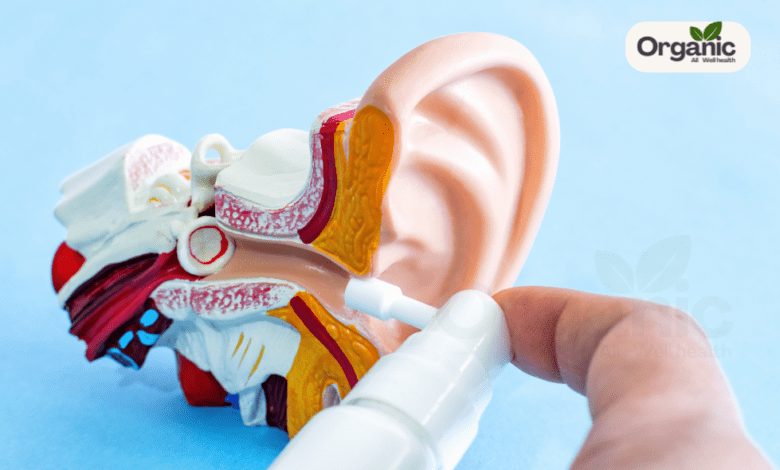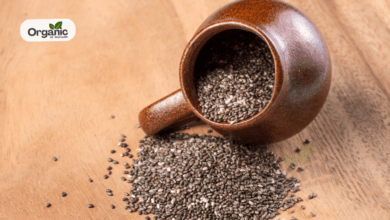How to Clean Your Ears – Complete Guide to Safe and Effective Ear Hygiene

Maintaining proper hygiene is a crucial aspect of personal care, and knowing how to clean your ears is an essential but often misunderstood part of it. While many people rely on cotton swabs or home remedies, experts agree that improper techniques can cause more harm than good. In this detailed guide from the allwellhealthorganic team, we will explain everything you need to know about cleaning your ears safely, effectively, and naturally.
Understanding Earwax and Its Purpose
What Is Earwax?
Earwax, medically referred to as cerumen, is a naturally occurring substance produced by glands in the outer part of the ear canal. Despite its reputation for being dirty or unnecessary, earwax plays a vital role in protecting your ears.
Functions of Earwax
Earwax serves several essential functions:
- Protection: It traps dirt, dust, and other harmful particles.
- Lubrication: It prevents dryness and itching inside the ear.
- Antibacterial Properties: It acts as a natural defense against bacteria, fungi, and insects.
How Does Earwax Exit the Ear?
Your body has a natural mechanism to remove earwax. Movements such as chewing and jaw motion help to push old wax from the inner part of the canal to the outer ear, where it dries and falls off. This natural cleaning process makes frequent cleaning unnecessary for most people.
Should You Clean Your Ears?
The Medical Opinion
According to health professionals and experts quoted by allwellhealthorganic, your ears are self-cleaning and generally don’t need external interference. Inserting objects like cotton swabs into the ear canal may push the wax deeper, causing blockages and potential injuries.
When Is Ear Cleaning Necessary?
Although self-cleaning is sufficient for most, there are certain conditions where cleaning becomes necessary:
- Excessive earwax buildup
- Discomfort or pain
- Difficulty hearing
- Tinnitus (ringing in the ears)
- A feeling of fullness or pressure
- Itching or unpleasant odor
If you experience any of these symptoms, you might be dealing with a condition called cerumen impaction, which refers to earwax completely blocking the ear canal.
Causes of Earwax Buildup
Some people are more prone to wax accumulation due to the following reasons:
- Use of hearing aids or earplugs
- Frequent use of cotton swabs
- Narrow or oddly shaped ear canals
- Skin conditions like eczema
- History of ear surgery
The allwellhealthorganic medical reviewers stress that earwax buildup can be managed effectively with the right techniques and by consulting medical professionals.
Safe Methods on How to Clean Your Ears
Now that you understand when and why to clean your ears, let’s explore how to clean your ears using methods that are both safe and effective.
Also Read: Why Is My Cholesterol Still High?
1. External Ear Cleaning
The outer ear or auricle can be cleaned with a soft, damp washcloth. Simply wipe the area gently to remove dirt and dried wax. This method is completely safe and can be part of your regular hygiene routine.
2. Over-the-Counter Ear Drops
There are two main types of ear drops used to soften or dissolve wax:
Water-Based Cerumenolytics:
- Hydrogen peroxide
- Carbamide peroxide
- Acetic acid
- Docusate sodium
- Sodium bicarbonate
Oil-Based Cerumenolytics:
- Olive oil
- Peanut oil
- Almond oil
Doctors generally recommend using 3 to 5 drops, once or twice a day for 3 to 7 days. Always read instructions carefully or consult a physician before using them.
3. Irrigation (Ear Rinsing)
Irrigation is a safe and effective method for people without a history of ear infections, surgery, or ruptured eardrums. Here’s how it works:
- Warm water or saline solution is introduced into the ear canal using a rubber bulb syringe.
- Let the solution sit for a minute.
- Tilt your head to let the water and wax drain out.
Make sure the water is body-temperature, as cold water may cause dizziness due to stimulation of the vestibular system.
4. Manual Removal by a Healthcare Provider
This is the most reliable method if you have cerumen impaction or chronic earwax buildup. An ENT specialist might use tools like:
- Curette (small loop or spoon)
- Suction device
- Alligator forceps
- Microscope or otoscope
These procedures are quick and safe when done professionally and should never be attempted at home.
What Not to Do While Cleaning Your Ears
Understanding how to clean your ears also involves knowing what to avoid:
Avoid Cotton Swabs
Cotton swabs are the most commonly misused item for ear cleaning. Here’s why they are harmful:
- Push wax deeper into the canal
- Cause scratches and injuries
- Risk of perforating the eardrum
- Can introduce infections
You can use cotton swabs only to clean the outer ear and never insert them inside.
Avoid Ear Candling
Ear candling involves inserting a hollow candle into the ear canal and lighting it to supposedly draw out wax. However, studies and the FDA confirm:
- It is ineffective
- Can cause burns
- May puncture the eardrum
Avoid At-Home Suction Devices
Although marketed as convenient, most home suction devices lack the suction power and precision of medical-grade instruments. They are not recommended for general use.
How Hearing Aids Affect Earwax
People who wear hearing aids or use earplugs regularly are at a higher risk of wax buildup. This is because such devices block the natural exit route of earwax.
Tips for Hearing Aid Users
- Remove hearing aids for 8 hours daily, preferably while sleeping.
- Use mineral oil drops once a week to prevent buildup.
- Schedule regular visits to an ENT specialist for cleaning.
Blocked ears may affect hearing aid performance or even damage the device itself.
How to Clean Your Ears at Home Safely
If you don’t have serious symptoms, you can try the following at-home solutions:
Use Natural Oils
Put 2-3 drops of baby oil, olive oil, or mineral oil into the ear canal. Let it sit for 5 minutes, then tilt your head to drain it out. Repeat daily for up to a week.
Rinse with a Bulb Syringe
Fill a bulb syringe with warm water or saline solution and gently flush your ear canal. Avoid this method if you have a perforated eardrum or frequent infections.
Avoid Aggressive Tools
Do not use hairpins, tweezers, or ear picks. These may cause permanent damage and worsen the problem.
When to See a Doctor
You should consult a medical professional if:
- You experience sudden hearing loss
- There is discharge or bleeding
- You have severe pain or fever
- Wax buildup reoccurs frequently
Preventive Care for Healthy Ears
- Avoid inserting anything into your ear canal.
- Limit headphone or earbud use.
- Keep ears dry and clean after swimming.
- Visit an ENT once or twice a year if you’re prone to buildup.
Frequently Asked Questions
What is the safest way to clean your ears?
Use a soft washcloth to wipe the outer ear or use doctor-approved drops to soften the wax.
Can I remove earwax at home?
Yes, with oil-based drops or saline irrigation — but only if you don’t have any medical contraindications.
How do I naturally remove earwax?
Let your ears self-clean. You can assist the process by staying hydrated and avoiding excessive use of earplugs or headphones.
Are cotton swabs good for cleaning ears?
No. They often push wax deeper and may cause injury. Only use them for outer ear cleaning.
Conclusion
Knowing how to clean your ears safely is critical to avoiding unnecessary medical issues and maintaining proper hygiene. Since earwax is part of your body’s natural defense, interference should be minimal and only done under the right conditions.
Always opt for gentle cleaning methods, consult your doctor for severe buildup, and avoid inserting objects into the ear canal. The allwellhealthorganic team recommends annual check-ups with a healthcare provider, especially if you use hearing aids or experience recurring issues.
Disclaimer: This advice is for general informational purposes only. It is not a substitute for professional medical advice. Always consult an expert or your own doctor for more information. WellHealthOrganic is not responsible for the accuracy of this information.



